Filmy poklatkowe są popularnymi tematami do kręcenia ze względu na ich zdolność do pokazania zmian zachodzących powoli w czasie. Jedną z największych zalet aparatu Nikon D850 jest łatwość nagrywania filmów poklatkowych. W rzeczywistości istnieją dwa sposoby robienia zdjęć poklatkowych za pomocą aparatu Nikon D850:w trybie fotografowania z interwałem lub w trybie filmu poklatkowego.
W tym samouczku dotyczącym nagrywania poklatkowego Nikon D850 pokażemy, jak skonfigurować aparat do tworzenia filmów w trybach Film poklatkowy i Fotografowanie z interwałem. Ale najpierw…
Jaka jest różnica między trybami filmów poklatkowych i zdjęć interwałowych firmy Nikon?
Różnica między trybem filmu poklatkowego aparatu Nikon D850 a trybem interwalometru zależy od kontroli. W przypadku fotografowania z przerwami można zaprogramować aparat D850 tak, aby rozpoczynał wykonywanie zdjęć o określonej godzinie i kontynuował je w określonych odstępach czasu (np. jedna klatka co minutę lub godzinę). Następnie ustawiasz liczbę zdjęć, które chcesz wykonać, a aparat D850 będzie używał tego interwalometru do robienia zdjęć, aż osiągnie tę liczbę.
Aparat D850 zapisze również tę sekwencję zdjęć we własnym folderze na karcie pamięci, dzięki czemu można je łatwo znaleźć i nie zaśmiecać wody. Następnie możesz przesłać te obrazy do oprogramowania do edycji wideo, a nawet Photoshopa, i stworzyć animowaną sekwencję, która przechodzi przez każdą klatkę w ustalonym czasie trwania dla każdego obrazu, pokazując sekwencję poklatkową w całej okazałości.
W trybie filmów poklatkowych aparatu D850 ponownie ustawiasz aparat, aby robił zdjęcia w ustalonych odstępach czasu przez określony czas. Jednak w tym trybie aparat D850 wykonuje zdjęcia i automatycznie generuje je w aparacie, pozostawiając plik .mov, który można udostępnić. Co w takim razie nasuwa pytanie…
- Tryb cichy Nikona D850:jak skonfigurować ciche fotografowanie z podglądem na żywo
Po co robić zdjęcia z interwalometrem firmy Nikon zamiast filmowania poklatkowego?
- większa kontrola nad obrazami
- więcej kontroli nad czasem w swoim filmie
- obrazy z pełną liczbą pikseli
- opcje zmiany rozmiaru
Znowu kontrola. Podczas gdy tryb filmu poklatkowego zwiększa wygodę, generując dla ciebie sekwencję ruchomych obrazów, dzięki timerowi interwałowemu możesz edytować obrazy, przetwarzane pojedynczo lub wsadowo, oraz usuwać klatki z sekwencji.
Otrzymujesz również obrazy w pełnej rozdzielczości, których rozmiar możesz zmienić lub przyciąć.
Poniższy film poklatkowy został nakręcony w trybie zdjęć interwałowych aparatu Nikon D850. Jak widać, mieliśmy naprawdę ekstremalne zmiany światła podczas naszego timelapse. Kręciliśmy go dzień po burzy śnieżnej tutaj, w Wielkiej Brytanii, przez około sześć godzin.
Temperatura wzrosła, a śnieg zaczął dość szybko topnieć. Ale wraz z cieplejszymi temperaturami przyszły ulewne deszcze i grad, a światło zmieniło się z ekstremalnego słońca na ciemne chmury.
Ekspozycję D850 ustawiliśmy na automatyczną, z interwałem ustawionym na 1 klatkę na minutę przez około sześć godzin.
- Recenzja Nikona D850
Konfiguracja fotografowania z interwalometrem
Przejdź do ostatniej strony menu Fotografowania i zaznacz opcję Fotografowanie z interwałem. Press the centre OK button or right arrow on your four-way controller.
You’ll now be in the Interval timer menu and you’ll need to set a few options before you can begin your timelapse.
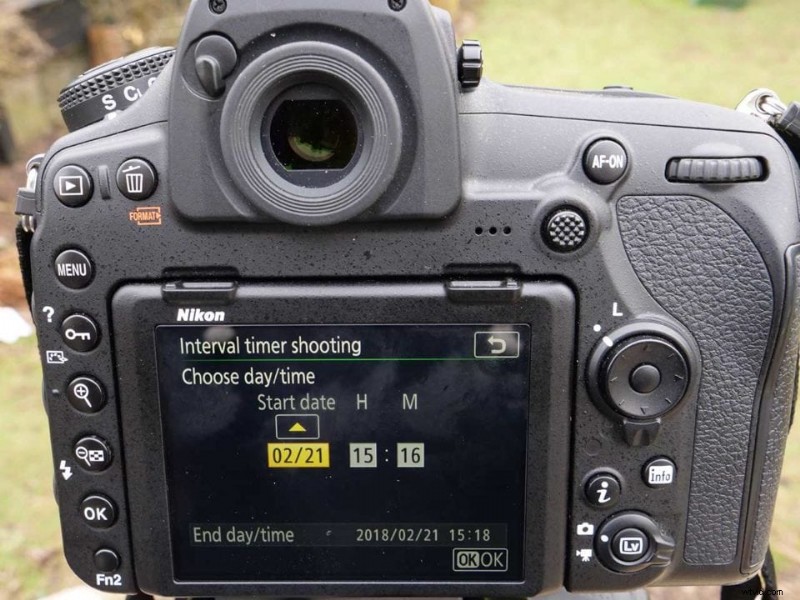
01 Set the date and time your sequence should start
First you need to set the date and time at which you’d like your interval timer to begin, or alternatively you can select NOW. Press the centre OK button in your four-way controller to set.
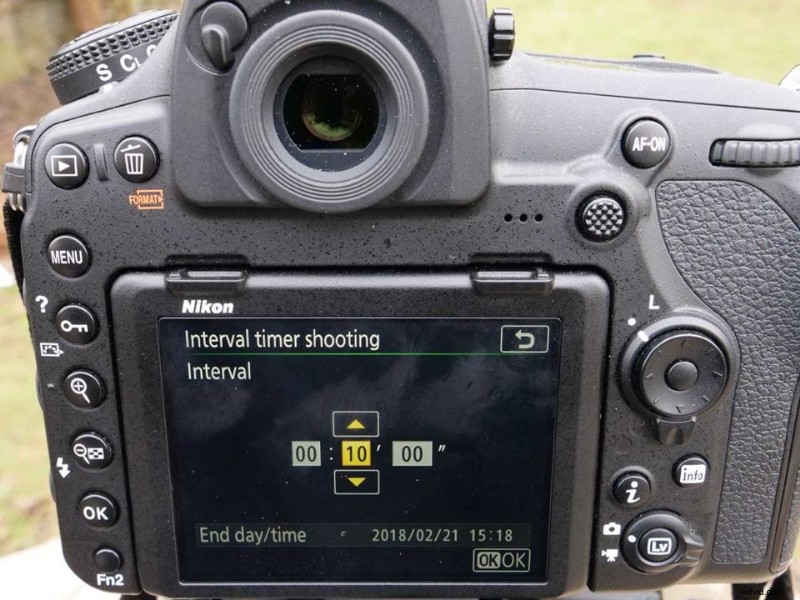
02 Choose the number of intervals and shots per interval
Next you need to set the number of intervals and shots per interval. For instance, we set ours to 360 intervals at one frame per interval. This equates to one shot per minute over six hours.
Here you need to think about how long your sequence might take to transpire in realtime, but also about how it will translate to video. Thirty frames equates to one second of cinematic video. So 360 frames is about 12secs.
There are also apps, such as PhotoPills Timelapse Calculator, that can help you with the numbers if math isn’t your strong point!
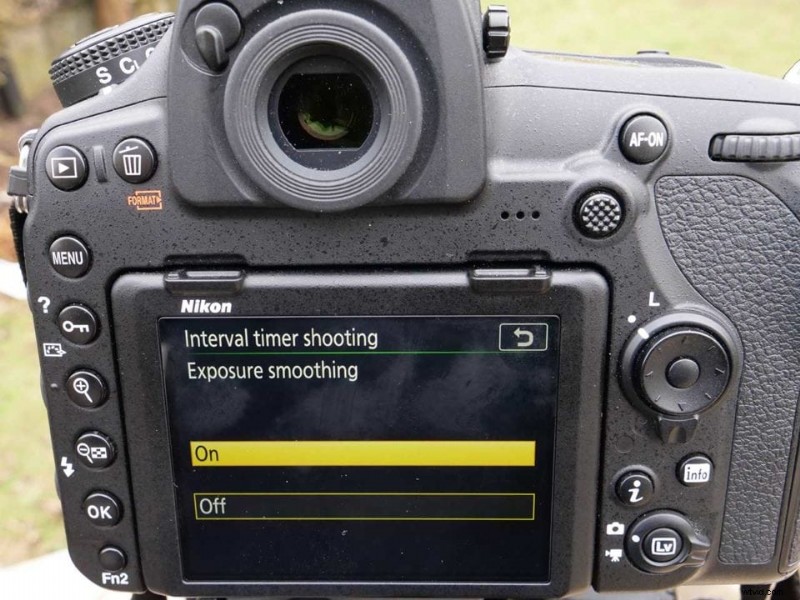
03 Enable exposure smoothing
Like the Nikon D850 Focus Shift mode , you also have an Exposure Smoothing option you can enable, which smooths the transition between frames. Though in the extreme light changes we faced, it’s sometimes inevitable.
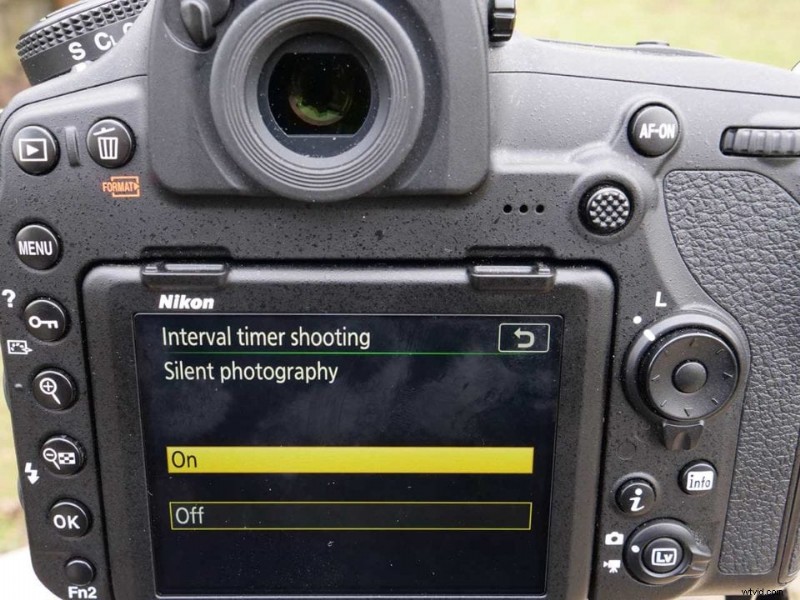
04 Enable silent photography mode
Again, like the Focus Shift mode, the Nikon D850 enables you to switch to the electronic shutter for silent shooting during your Interval Timer shooting. This helps reduce vibrations and potential camera shake.
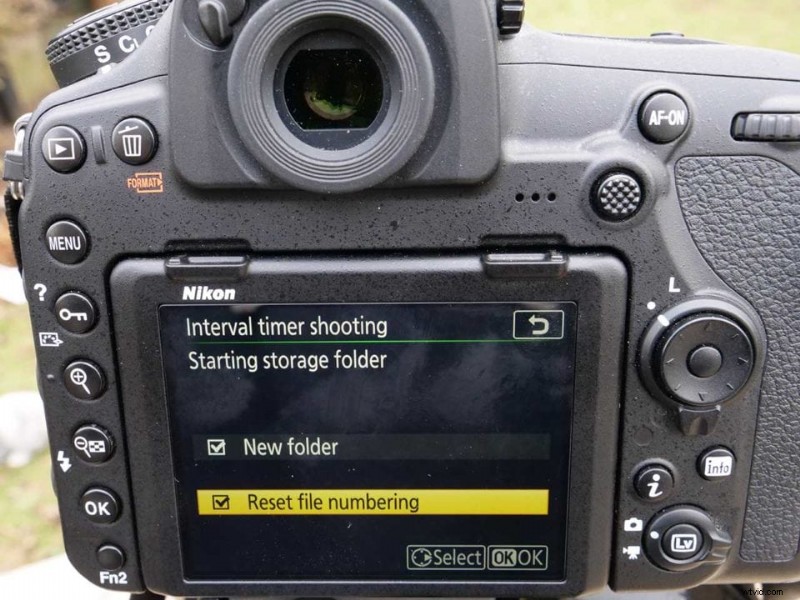
05 Set images to appear in a new folder
It’s also worth enabling the D850’s option to store the images from your sequence in a separate folder on your memory card. This just makes them easier to access and import later on. You can also reset the file number for the sequence.
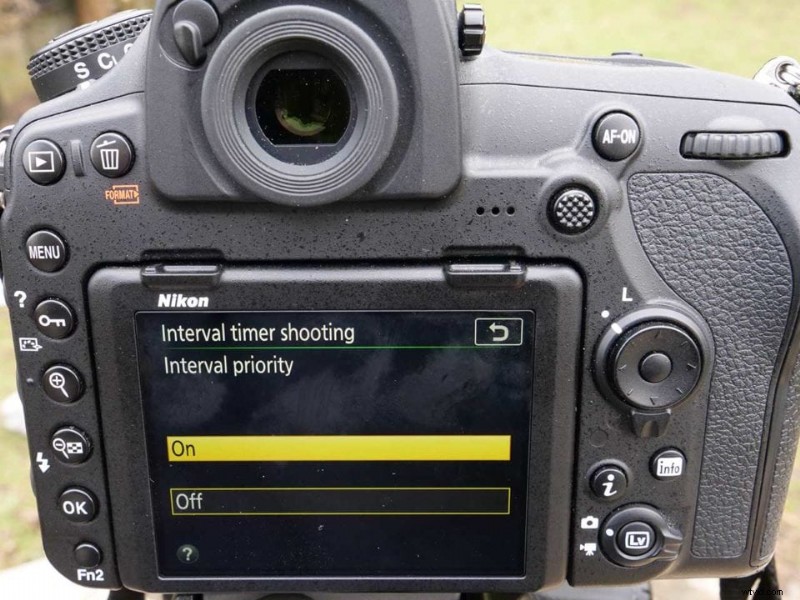
06 Do you prioritise the intervals or exposure?
Finally you can enable the D850’s Interval Priority, which gives priority to maintaining your interval between shots. Leaving it disabled prioritises your exposure.
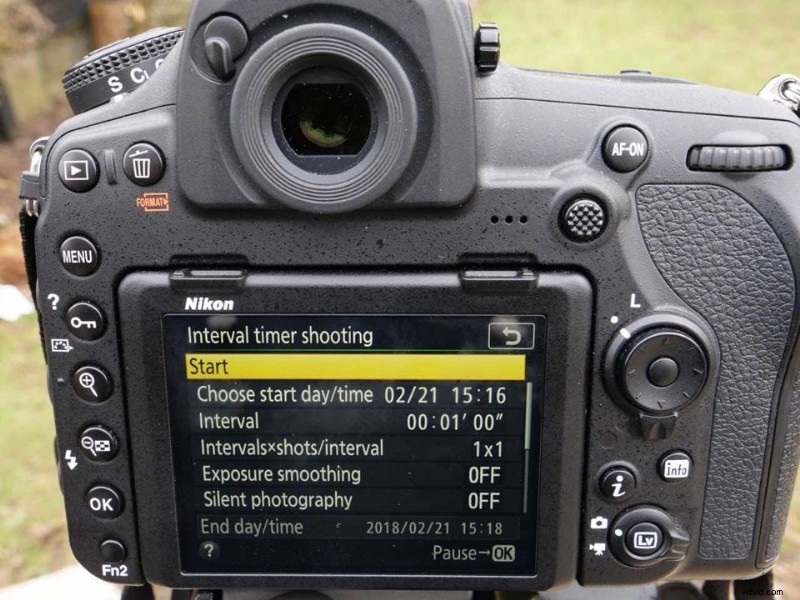
07 Start the sequence
You’re now done. Navigate back to the top of the Interval Shooting menu and highlight Start, then press OK. Your interval timer will now begin shooting at its designated time!
How to set up the Nikon D850 Interval Timer Shooting:Summary
- Choose your start day and time
- Select the length of your interval, then choose the number of intervals you’ll shoot and how many frames per interval
- Enable exposure smoothing
- Enable silent photography mode
- Set images to write to a new folder on your memory card
- Decide if you want to enable Interval Priority, or prioritise exposure
How to turn your timelapse images into a movie
The one downside of using the Nikon D850’s Interval Timer Shooting mode is that you need to create your timelapse movie yourself. But this is really a small price to pay for the control you have over the process.
You can create your movies in professional software such as Final Cut Pro if you like, but really all you need is some basic free software. We created ours in iMovie simply by importing all of our images in the sequence, setting a duration of 0.2secs per image in each clip and then exporting the file. It took minutes.
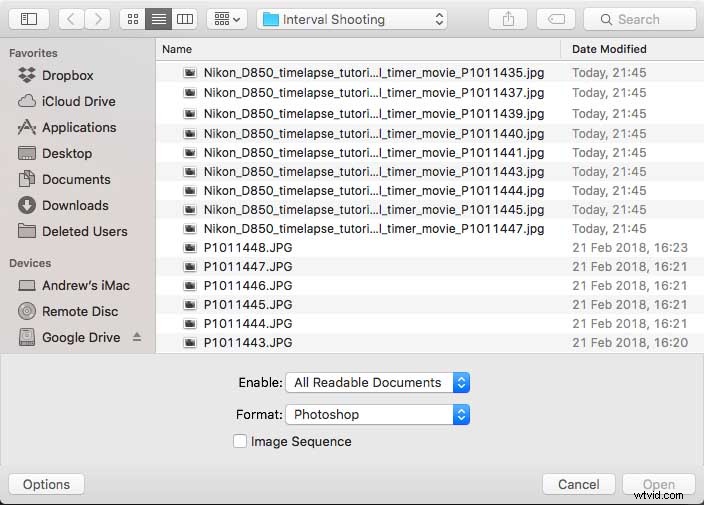
You can also create a moving image sequence in Photoshop. When you open your batch of images you’ll see there’s an option to tick to create a sequence. You then need to enable a timeline view, and there are a few more steps. We’ll explain all this in a future tutorial. But it’s very quick and intuitive.
How to set up the Nikon D850 Timelapse Movie mode
The Nikon D850’s Timelapse Movie mode is very similar to the Interval Timer Shooting set-up process. You’ll find this option on the last page of your Movie Shooting Menu.
Again, there are some options and settings you need to dial in first, but most of these are the same as the Interval Timer mode.
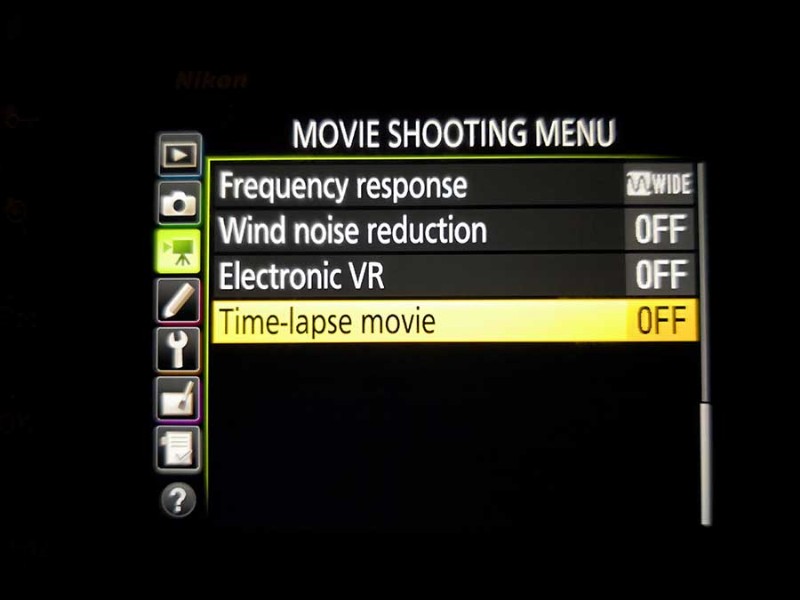
- First, select the interval time. Again, this will vary based on how fast your subject is changing and depend on how long you want the movie to be. A sunset will occur more quickly than our melting snowman, for instance, so you might want to set a shorter interval to capture the subtleties of its change.
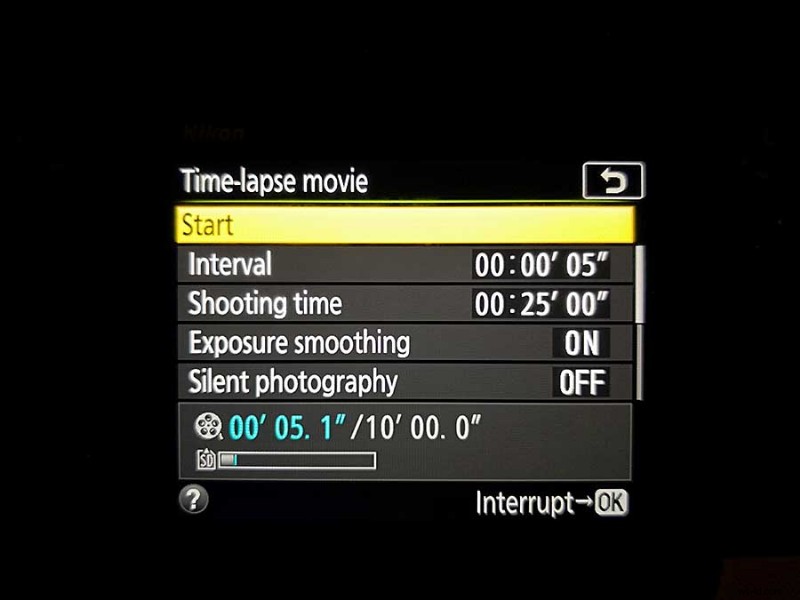
- Next dial in your shooting time. Once again, this depends on your subject and how long the movie should be. That sunset we mentioned, you might want to shoot for 25 minutes at 5sec intervals. Our melting snowman we shot over six hours at one frame per minute.
- You’ll again find Exposure Smoothing to ensure consistency between frames and Silent Photography to reduce vibrations on longer exposures.
- Next you can choose the Image Area. This basically means, do you want to shoot in the Nikon D850’s full-frame FX format or switch to its DX-format crop mode.
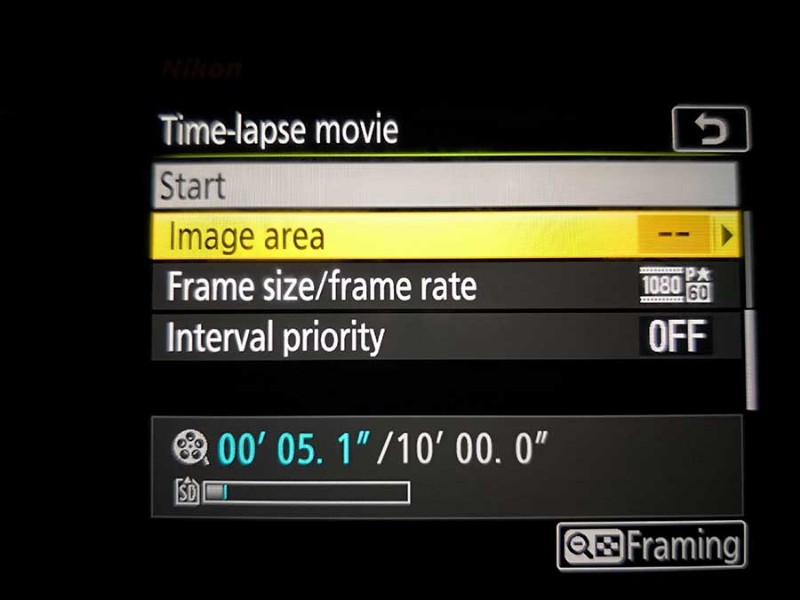
- Now you can select your movie’s frame rate. Options vary from 3840 x 2160 at 30/25/24p, 1920 x 1080 at 60/50/30/25p and 1280 x 720 at 60/50p.
- And finally you can choose to enable Interval Priority during your movie just like in Interval Timer mode.
Final Tips for Timelapses
- Make sure you’ve set up your time zone properly. Because the camera is using the timer to begin a timelapse at a particular time, if the time is set wrong you could miss that sunrise.
- Ensure you have enough storage space on your card to account for all your images. The Nikon D850 has dual card slots so it’s worth putting in a second card for long timelapse sequences.
